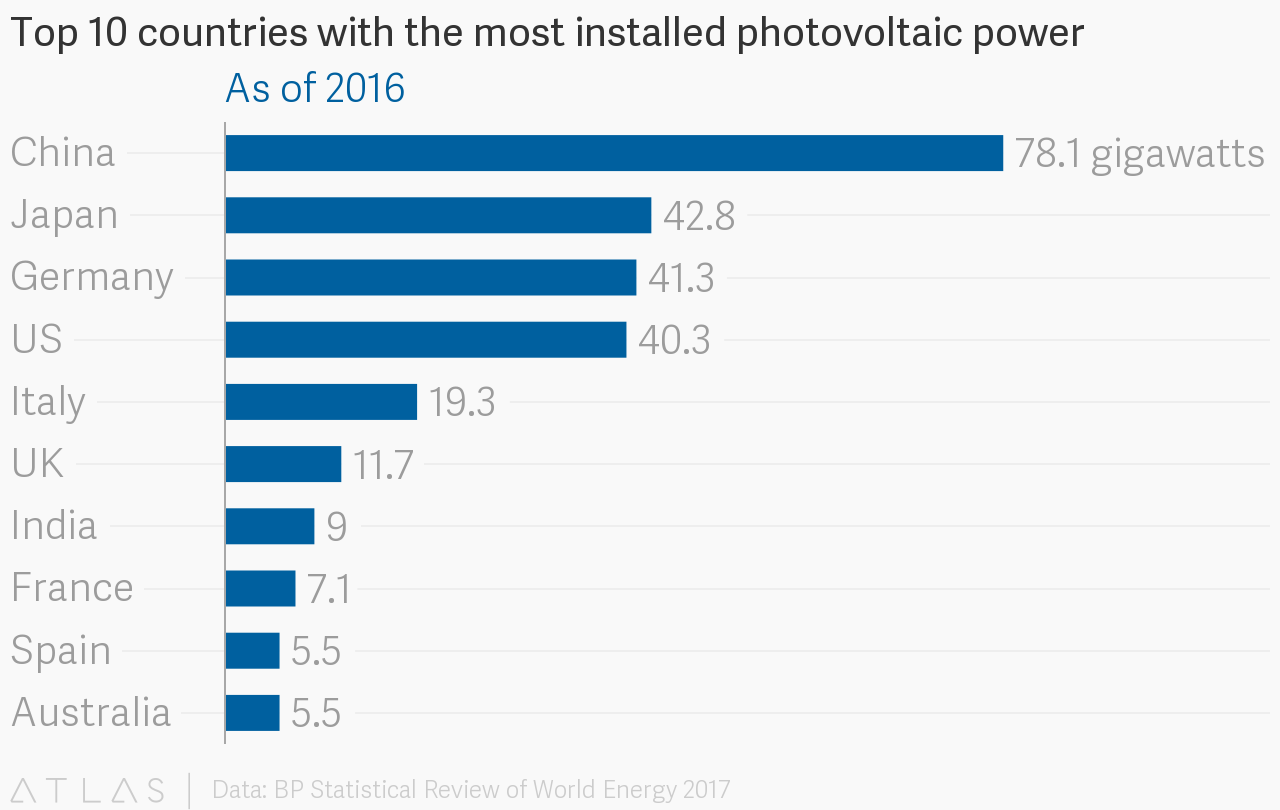Abandoned Coal Mines Are Being Reimagined As Solar Farms
Across the world, countries are abandoning coal—the dirtiest source of energy—in favor of solar, and the old coal mines are being reinvented as floating solar farms that can power tens of thousands of homes.
Updated May 28 2019, 6:26 p.m. ET
From the dirtiest source of energy to the cleanest, abandoned coal mines around the world are getting a second life as sites for large-scale solar farms.
The biggest one yet began operating this weekend—a 150-megawatt floating solar farm in the eastern Chinese city of Huainan. At one time, the mine accounted for nearly 20 percent of the country’s coal reserves; now the world’s biggest floating solar project is sitting atop the lake formed in the collapsed mine.
The project is expected to come into full use in May 2018, at which time it will be able to power around 94,000 homes. Though it eclipses all the other floating solar farms in the world, this one joins another recent project in the same city that, until now, was the largest of its kind in the world. Also atop a former coal mine, the latter project can supply electricity to 15,000 homes and came online in August.
Both projects join the building trend of solar farms replacing abandoned coal mines. In Germany, which ranks third in terms of installed solar capacity countrywide, a coal that is set to close next year is being reimagined as a renewable energy plant able to power 40,000 homes with solar panels and wind turbines.
The U.S. is just behind Germany in amount of installed solar capacity, and is set to turn a strip mine in the Appalachians into a solar power plant that could produce somewhere between 50 to 100MW of power in 2018. And last year the U.K. expressed interest in turning the country’s last deep coal mine into a 5-MW solar farm.
Coal is the generally regarded as the "dirtiest" fossil fuel energy source. It produces the least amount of energy and the greatest amount of pollution per kilogram. And, thankfully, the world is quickly abandoning it: Earlier this Fall, Greenpeace and CoalSwarm found that countries are abandoning coal at an astonishing pace, and hundreds of companies have left the business in recent years. Of the 1,675 companies that have owned coal-fired power plants since 2010, over a quarter 448 companies have left it behind.
At the same time, solar power is taking off. In 2016, solar capacity worldwide leapt by 50 percent with more than 76 gigawatts installed compared to 50GW the year before. The international energy agency predicts that by 2022, more than 920GW will be utilized worldwide.
Using old coal mines to help bump this growth has its advantages. For one, abandoned coal mines often present a land-use challenge. Lakes built inside of them are often high in sulfate, making them unfit for farming purposes. Floating solar farms also work more efficiently than land-bound ones due to the cooling effect of the water, which saves energy that might otherwise be used for cooling the panels. Additionally, having solar panels cover the surface of the lake can help stop evaporation, keeping the lake fuller longer. In all, it's a win-win-win situation for clean, renewable energy.

